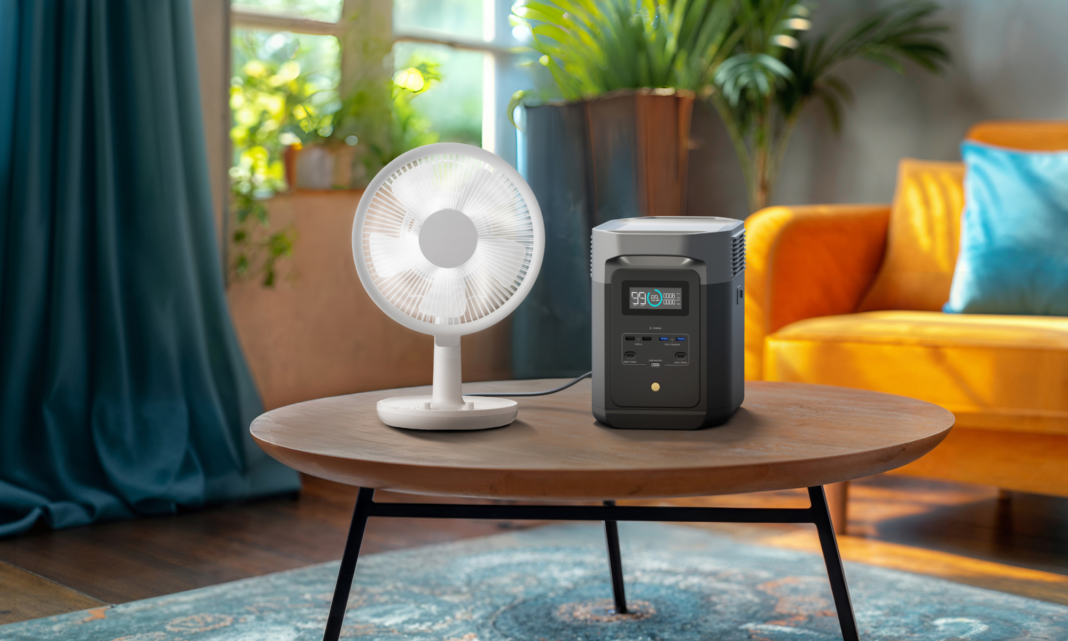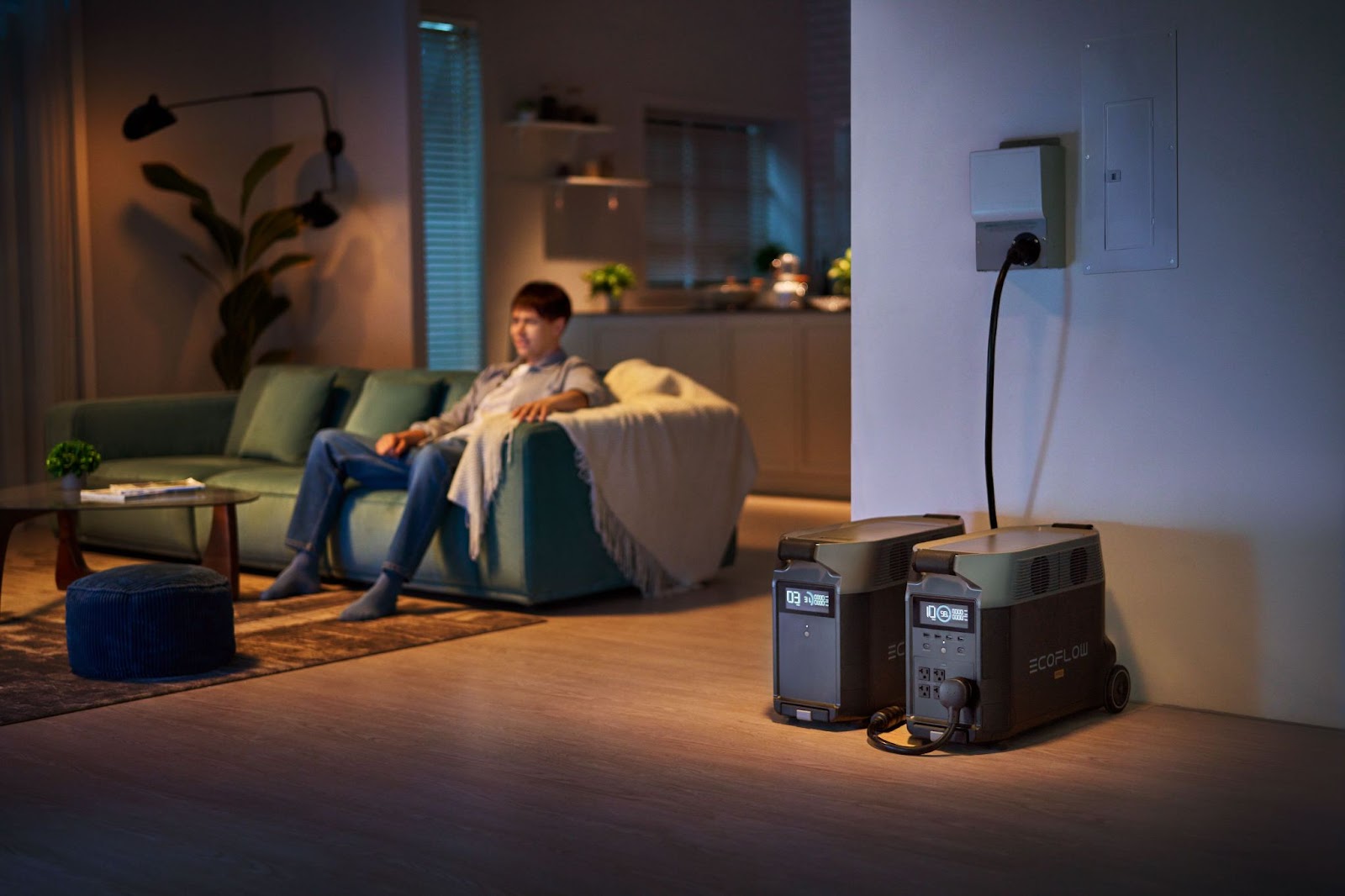Does a Fan Use a Lot of Electricity?
- Do Fans Consume a Lot of Electricity?
- How Much Watts Does the Average Fan Use?
- How to Estimate the Energy Consumption of a Fan
- Tips to Increase Your Fan’s Energy Efficiency and Reduce Electricity Bills
- Frequently Asked Questions
- Do Fans Make Your Electric Bill High?
- Does Running a Fan All Day Use a Lot of Electricity?
- How Much Does a Fan Add to an Electric Bill?
- Final Thoughts
In the thick of the summer months, it can be hard to keep the house cool while also keeping the rising electricity costs at bay. If you constantly reach for the thermostat to cool things off, it might be time to reconsider.
Utilizing fans throughout your house is an excellent way to save a little on your energy bills. But how much wattage can you expect these devices to use? Read on to find out.


Do Fans Consume a Lot of Electricity?
In short, fans do not consume a ton of electricity. Of course, they require electricity to function, but compared to other cooling units, they use quite a bit less. Other options, like the EcoFlow Wave 3 Portable AC, can cool spaces without overusing electricity; with lower global warming potential and no ozone emissions, it’s the ideal way to stay cool and comfortable.
How Much Watts Does the Average Fan Use?
The exact watts a fan uses will vary from unit to unit. However, the average typically ranges from 50 to 100 watts per hour.
Some fans, such as box fans or oscillating fans, typically require a bit higher watts, especially when used at a high speed. The EcoFlow DELTA 2 can supply power to these units no matter where you are, so there’s no need to be concerned about their watt usage.
How to Estimate the Energy Consumption of a Fan
If you want to better understand how much energy your fans are using, there are some formulas you can use. You can get your answer by multiplying the watts used by the hours it is in use.
The electricity usage of a fan depends on its wattage and electricity costs in your area. Fans typically run between 10W to 100W1. The average wattage for fans is 39.3W on high speed and 6.9W on low speed. Fans use about 0.0393 kWh of electricity per hour at high speed based on the average wattage.
Tips to Increase Your Fan’s Energy Efficiency and Reduce Electricity Bills
Opting to use your fan instead of cranking up the air conditioning is already a step in the right direction. Take a look at these tips below to help your fan be as effective and efficient as possible.
Invest in Quality Fans
Investing in high - quality fans might seem like a steeper upfront cost, but it's a decision you'll come to appreciate. These fans are engineered with advanced aerodynamic designs and superior motor technology. As a result, they operate with greater efficiency, moving more air with less energy consumption. Compared to cheaper alternatives, they can cool a room much more quickly, reducing the time you need to run them. This not only saves on electricity bills in the long run but also ensures a more consistent and comfortable indoor environment.
Use the Proper Sized Fan
Before installing a fan, it’s crucial to conduct thorough research on the space where it will be placed. For larger, open - concept rooms, an overhead ceiling fan with a wide blade span can effectively distribute air throughout the area, creating a gentle breeze that cools every corner. In contrast, smaller, more confined spaces like a compact bedroom or a home office might benefit from a stationary desk or tower fan. These can direct airflow precisely where it’s needed.
With the EcoFlow RIVER 2 Series Portable Power Station like the EcoFlow RIVER 2, you can power any type of fan anywhere, so take the time to make the right choice for your situation.
Choose Fans Over AC
Instead of keeping the AC and fans blasting at full speed, you’ll benefit from turning the AC up a few degrees. This will save you a little on your energy bill and allow the fan to circulate the air, making the room feel cooler and more ventilated. This combination not only cuts down on your energy bill but also extends the lifespan of your AC unit by reducing its workload. And in the event of a power outage, there’s no need to worry. The EcoFlow DELTA Series can keep your fans up and running even if the power has gone out.
Keep It Clean
Dust and dander have a knack for accumulating on fan blades, particularly when the fan is in regular use. Over time, this buildup can significantly impede the fan's performance. A layer of dust on the blades adds weight, forcing the motor to work harder to spin them. This not only reduces the airflow but also increases energy consumption. By regularly cleaning the blades, you can prevent this. Use a soft, dry cloth or a gentle cleaning solution to wipe away the grime. This simple maintenance task will ensure that your fan remains functional and efficient, delivering the cooling power you expect without any unnecessary strain on its components.
Install It Correctly
Surprisingly, there is indeed a proper and improper way to install a fan. The direction in which the fan blades rotate plays a crucial role in its efficiency. For most fans, the blades should be traveling counterclockwise when viewed from below. This is because the aerodynamic design of the blades is optimized for this direction. When rotating counterclockwise, the blades are able to capture a larger volume of air, creating a stronger downdraft. This effectively circulates the air in the room, cooling it more rapidly and with less energy expenditure. Ensuring this correct installation not only maximizes the fan's cooling performance but also helps in reducing wear and tear on the motor, extending the fan's lifespan.


Frequently Asked Questions
Do Fans Make Your Electric Bill High?
Using fans instead of AC is a smart way to cut electric bills. Fans consume far less energy. For instance, a standard ceiling fan typically uses around 60 - 100 watts, while a small AC unit can use over 1000 watts. High - quality fans with the right size distribute air better, cooling spaces efficiently without a significant electricity cost hike. They're an eco - friendly and budget - friendly choice for milder weather.
Does Running a Fan All Day Use a Lot of Electricity?
Running a fan 24/7 uses some electricity, but it's negligible compared to AC. A typical fan might cost around $0.006 - $0.01 per hour to run. So, for a full day, it's well under a dollar. This low consumption makes fans ideal for continuous use during warm days when AC isn't necessary, helping maintain comfort without a big energy bill impact.
How Much Does a Fan Add to an Electric Bill?
The size and wattage of a fan determine its monthly cost. A common 70 - watt fan, running constantly for a month (720 hours), would cost about $30 (assuming an electricity rate of around $0.12 per kWh). In contrast, an AC unit running the same amount would cost nearly three times as much. Smaller, energy - efficient fans can keep this cost even lower, making them a cost - effective cooling option.
Final Thoughts
Opting to use your fan more often than your AC unit is an excellent way to save some money on your electricity bills. Choosing a suitable fan for your environment and setting it up correctly allows you to enjoy the benefits of cooler air without extra cost.
Now, there are even more ways to save. For more innovative ways to reduce your electricity use, take a look at EcoFlow’s portable power stations to keep your fans and devices powered reliably.